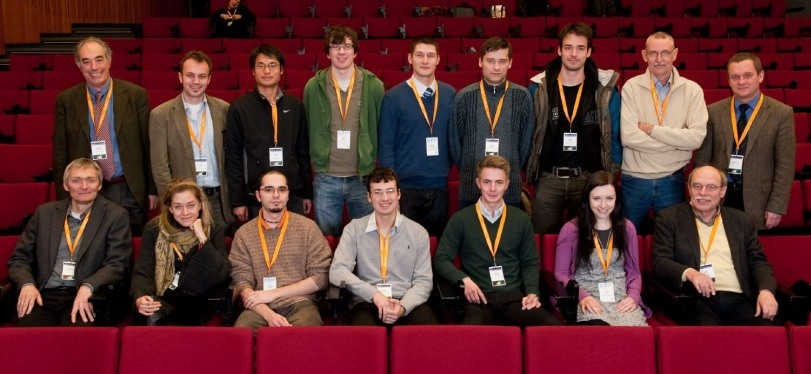Record attendance at 4th European XFEL Users’ Meeting
Despite the icy temperatures, which were exceptionally low for northern Germany, more than 280 scientists from 20 countries travelled to DESY in Hamburg at the end of January to attend the 4th European XFEL Users’ Meeting. 28 of them had recently finished their studies or PhD and received a travel expenses allowance from the funds of the EU project Pre-XFEL.
Massimo Altarelli, Managing Director of the European XFEL GmbH company, put this record attendance down to the foundation of the European research institution at the end of November 2009 (see News 30.11.2009). “The continuing support and the growing interest of our prospective users are remarkable,” Altarelli said. “From the general atmosphere of the sessions, it transpired that there is widespread agreement with the overall strategies proposed by the European XFEL management for the realization of the facility.”

The three-day-long 4th European XFEL Users’ Meeting was organized together with DESY/HASYLAB, and featured two joint events: the session ”Status and application of soft X-rays“ and the closing poster session.
The introductory lectures at the beginning of the meeting were especially well attended. Seven speakers gave an overview of the status of the project and its technical developments. The first six experiment stations to be implemented at the European XFEL featured prominently in these presentations.
At each of the three beamlines of the European XFEL, user groups will be able to choose from two completely equipped experiment stations. These will include sample-feeding units, detectors, data storage and optical lasers that can be used to excite chemical reactions in molecules, for instance. This is especially attractive for the research groups, as they can simply “dock” their samples at these existing infrastructures and start experimenting right away.
The six measuring stations first have to be developed and realized, however. This is a big challenge, but also a chance to construct the instruments such that they can serve users optimally right from the start. This is the reason why prospective users were to be involved in the European XFEL as soon as possible, in order that they could discuss their wishes and requirements concerning the planned experimental opportunities early on, come to an agreement about them and convey them to the planners.
In 2008 and 2009, six international workshops funded by the EU project Pre-XFEL were held at six different venues in Europe. Each was dedicated to one of the six instruments. The results of all these workshops were presented and discussed at the 4th Users’ Meeting. They now form the basis for the design of the first European XFEL experiment stations.